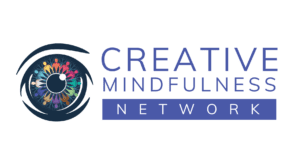One of the loveliest practices I ever learned for my own self-care is to make a two column list. In one column, I write down what is nourishing me right now. In the other column, I note what is depleting me right now. I encourage you to go ahead and try it for yourself. Sometimes a certain aspect of your life may appear in both columns, such as your work. If that’s the case, get specific. Think about what is most nourishing about your work, and then reflect on what is most depleting about your work.
My teacher and colleague Dr. Christine Valters Paintner, founder of Abbey of the Arts, first taught me this practice, based on the Examen prayer of St. Ignatius of Loyola. I engage in the practice at least once a year as a form of self-reflection (or what yogis might call self-study). This practice helps me to take stock and to notice where I might be able to make adjustments in my life. I also find the idea of nourishment to be much more sustainable than thinking in terms of self-care. Self-care can sometimes feel like an event, like going to get a pedicure, taking a bath with oils, or enrolling in a class just for enjoyment. While all of these things can be good for me, nourishing myself is something I must do daily, or I’ll end up depleted. Things like saying no or setting boundaries can be nourishing. Just sitting around and doing nothing, for me, can be nourishing. What is nourishing for you?
Therapy participants may come to EMDR Therapy to address wounds created by spiritual abuse or religious trauma. For many, although not all, of these folks, spirituality or even religion can still exist as a resource in their life, or at least as something they still highly regard. Having them use this nourishing/depleting inventory can be a solid first step in helping them to sort through what still works for them about their faith or religious practices and what may not. In one column, ask them to identify what is nourishing about the religion or spiritual practices, and in the other column, list what is depleting. As a caution, some people might still feel some trepidation about naming anything that could be coded as “bad” about their faith because of messages that they’ve received about prioritizing faith or religion. For others, the depleting column may be overrun and there are very few, if any, nourishing things to list. There are no right or wrong answers with this practice. It is simply a starting place to help people see where they are at with all things spiritual.
Where you can take this a step farther for EMDR Therapy is to then have people identify which components on the nourishing side could be brought in as resources in Phase 2 work. Perhaps they are simple resources such as doing a certain breath technique or saying a short prayer. In the early days of being an EMDR client, I carried over a prayer I developed in my addiction recovery: “God, teach me what I need to know.” Some of these resources can be tapped in or otherwise strengthened with bilateral stimulation. Figures from a spiritual tradition, such as the Blessed Mother, Buddha, any of the gods, or any of the saints might be great candidates as protector or wisdom figures. Even a verse from a sacred scripture or a spiritual song, regardless of the tradition, can be strengthened in this way.
The items that end up on the depleting side could be indicative of themes that can be explored for EMDR Phase 3 targets. For instance, let’s say that a person indicates having to do so many things out of obligation on the depleting side of their inventory. In exploring obligation as a theme, perhaps a negative belief of, “I have to do things perfectly to please God” emerges organically. On a traditional negative cognitions list, it might show up as “I have to be perfect/please everyone.” Whatever method you use for target selection, trace that negative cognition back to its origin story. When did the person first start believing that? What was the worst time in their life they experienced the sting of that belief? How is it affecting them now? Whatever answers you get to any of those questions could provide excellent targets to begin work on themes around spiritual abuse, religious trauma, church hurt, or whatever terminology the person feels is organic for them.
After reprocessing all the targets needed for this exploration, and testing out the impact of the work in life over the period of a few months, consider going back and having the person do another nourishing/depleting inventory. This practice can be a powerful tool for re-evaluation, both in EMDR Therapy and in life.
To read more insights from Jamie’s personal story that can be useful to your work as EMDR therapists, check out her latest book You Lied to Me About God: A Memoir, now available from North Atlantic Books.














